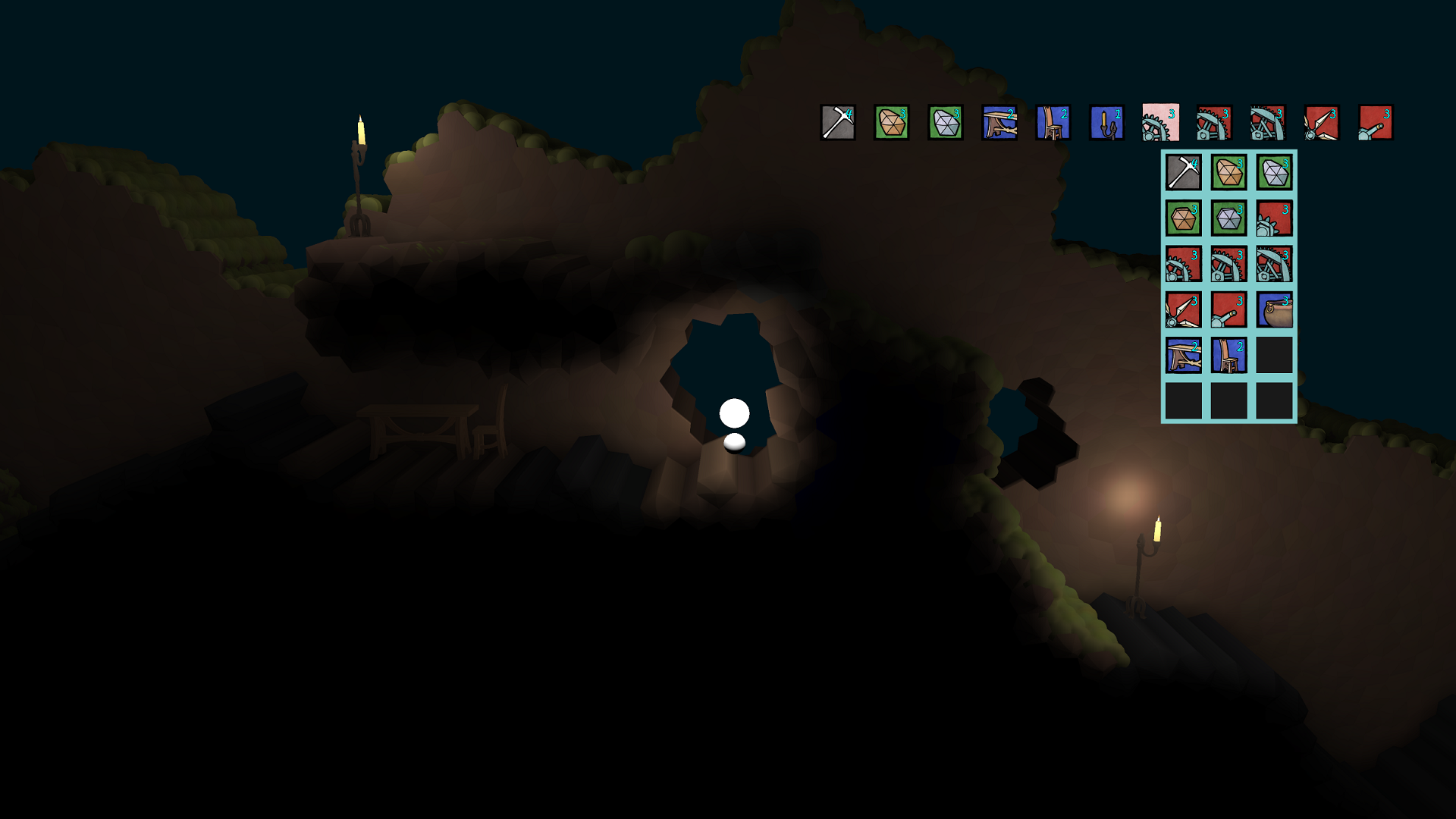So it’s been quiet out here since my last post, almost two years ago, about finalising Sprite Lamp. One of the things I mentioned is how bad I am at interfacing with the world through social media, and I think my lengthy silence bears that out. However, some things are happening! And some of those things involve being a bit more talkative on the internet. So this is me trying to get back into the swing of things. Each of these things will be getting a Proper Post in the near future.
New game project
It’s been a while since I was working on Sprite Lamp full time, and we’ve been kicking around/playing with a few ideas for Snake Hill Games’ next project in the meantime. I don’t know how this goes for most developers, but for me, this process usually involves building a few demos or other bits and pieces, seeing what seems good and/or interesting, and eventually settling on something to focus on.
Long story short, we’ve settled on something. It’s called Sun Shy, and it’s getting to the point now where I should probably start talking about it in public. Soon (tomorrow), I’ll put up a big, proper post. For now, I’ll just say that we’re hoping it will appeal to people who enjoyed games such as Factorio, Terraria, and World of Goo (yes, I realise they are three very different games). We’ve been chipping away at bits of it for a good while now, but not full time and not consistently, so it’s still early days – I suppose I would say it’s part way between a fairly well-fleshed-out tech demo and a pre-alpha game. It’s quite tech-heavy, so there’ll be plenty to say about how we’ve been approaching various challenges in the game’s development.
It’s still Saturday in America, which I think means I have to post a screenshot.

New team member
Snake Hill Games has historically consisted of two people. Sprite Lamp was developed mostly by me. Anyone who used it or saw anything about it will also have come across the artwork associated with it, such as that demo zombie, which was by Halley Orion. Since then, though, Snake Hill games has grown! A friend of mine by the name of Dr Ahmad Galea, hot on the heels of finishing his physics post-doc in the faraway land of Norway, has decided to join me in the exciting endeavour of game development. Sun Shy is going to be a bit heavy on simulation, and having Ahmad around to help me with the maths that I’m not up to is going to be great.
Creative Victoria
For those who don’t know, Snake Hill Games is in Victoria, which is a state in Australia. There’s a group called Creative Victoria that funds various arts stuff here, including research. Since games are a subset of art (apparently that discussion is finally settled), that means they fund games research. With this round, that includes us! The grants aren’t to work on a particular creative project, but the research can (obviously) have relevance to projects, and our research is about coming up with AI and animation techniques to deal with difficult 2D platformer environments. The animation stuff will mostly be about irregular environments (ie generated run cycles for bumpy floors, that kind of thing) and the AI stuff will mostly be about procedural and/or player-generated environments. You can read the announcement of the various funding recipients and their projects if you like.
Since it’s publicly funded research, of course, part of it is about contributing to a public knowledge base, so we’ll be documenting any useful techniques we find/develop here (as well as blogging about any pitfalls, false starts, and general failures on our part). More coming, on this front.
Website plans
I’m painfully aware that this website could in general stand to be improved . We don’t have a great deal of web development expertise between us right now here at Snake Hill Games, but since I’m going to have to post a lot more in the coming months, we intend to put our heads together and figure out how to make things at least a little bit nicer.










